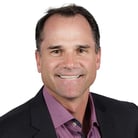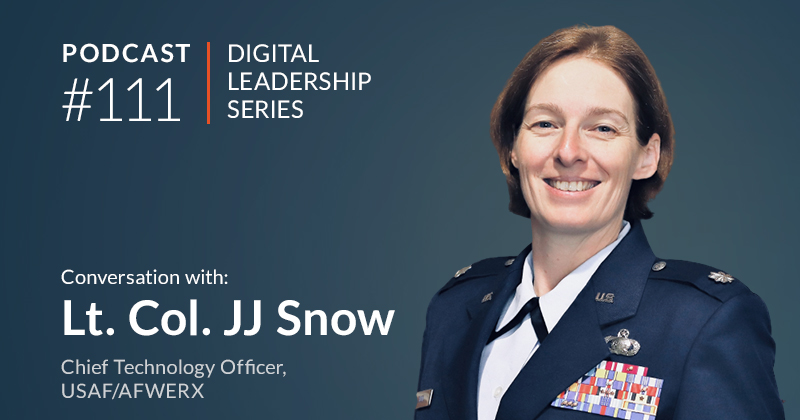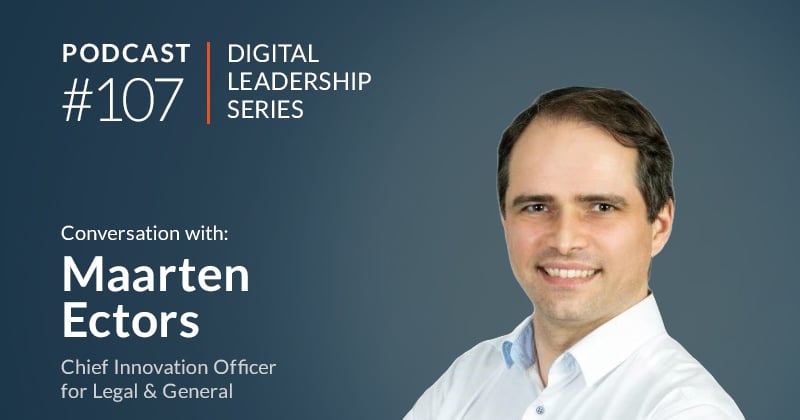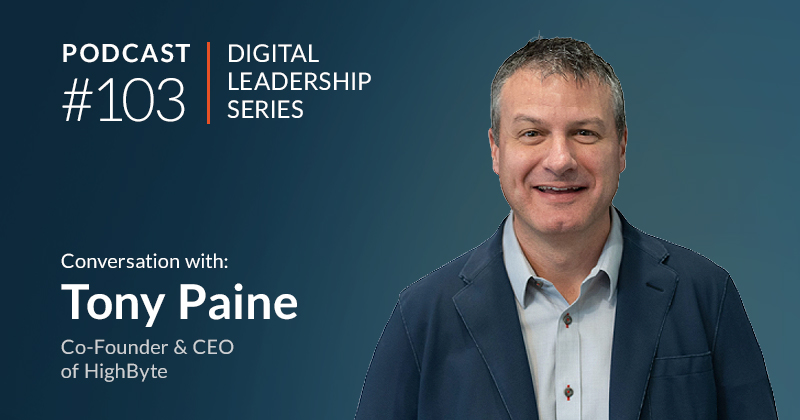Insight Vector: Creating Digital Sherpas for the IOT, an interview with Ron Konezny
Ed Maguire

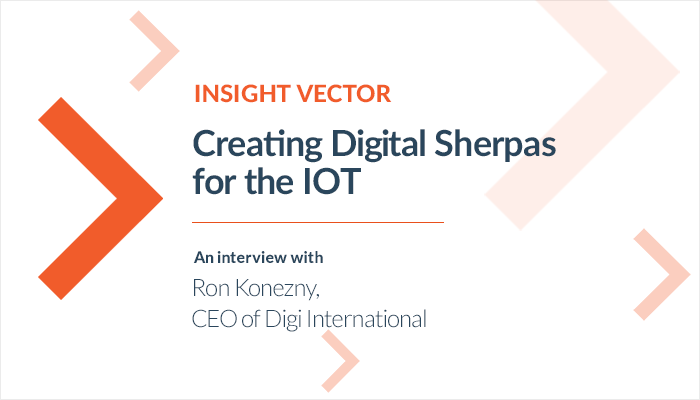 Innovation and market perspectives from leading IOT innovators
Innovation and market perspectives from leading IOT innovators
Our conversation with Ron Konezny, CEO of Digi International, centered on the need for IOT providers to focus on the outcomes – the business case and the user experience – to inform the design and technology choices for the customer.
There’s a lot of common ground with fleet management that translates to the food service and medical logistics businesses, which are industries with great potential that are highly fragmented. Particularly in scenarios where workers may not be specialists, you want the IOT solution to be a “Digital Sherpa” – guiding workflow, saving time and generating great return on investment.
|
|
Ron Konezny |
Mr. Konezny joined Digi in December, 2014, as President and Chief Executive Officer. Previously he was Vice President, Global Transportation and Logistics division of Trimble Navigation Limited, a global provider of navigation and range-finding equipment and related solutions. Prior to this position, he served as the Chief Executive Officer of PeopleNet, Inc., after PeopleNet was acquired by Trimble in 2011. Mr. Konezny was a founder of PeopleNet, a leading provider of telematics solutions for the transportation industry where he held a variety of executive positions since 1996. Mr. Konezny also presently serves on the board of directors of I.D. Systems, Inc.Mr. Konezny was the 2009 winner of the Ernst & Young Entrepreneur of the Year® award in the Technology category.
How do you define the Internet of Things?
I think about IOT in terms of a value chain. Initially, you have a target you want to better manage, a device or condition you’re gathering data on that could be a machine or a condition like temperature. You may also be doing some computation in the field with that data. The next piece of the value chain involves transmitting the data via wireless or wired connection, typically to a cloud where there is storage and potentially additional processing. Next, the data is made available via a cloud interface, mobile app or an analytic interface to the user. Lastly, the data can be made available to other systems via some type of API or file transfer.
Tell us about how your experience informs your perspective of IOT…
In the 1990s, I started off in management consulting in computer and telco industries. The idea of combining wireless, Internet, and sensors was not widely appreciated. I started PeopleNet, a fleet management firm that combined cellular, Internet and GPS into a solution purpose-built for trucking. After taking on private equity, we sold to Trimble Navigation where I stayed for 3 years through 6 acquisitions to grow the transportation and logistics business.
The Digi CEO opportunity was local to me and my family and they had a lot of experience in the hardware aspect of the IOT value chain. When I joined, Digi had $90 million in cash and no debt, so this was an opportunity to transform into new areas. It was clear there was an opportunity to become an IOT leader. The company has done 3 acquisitions in the areas of monitoring food and medicine throughout the supply chain.
How do you map the right technology to the appropriate use case?
There are so many different RF technologies – you can use 3G, LTE, LTE-Advanced LTE- Cat1, WIFI, Satellite, LoRa, SigFox, Bluetooth, Zigbee, and others – it’s important to choose the right technologies and service providers. The device needs to be appropriate for the environment. A home or business is different from outdoors or a mobile vehicle. Then there is ease of installation and management. Also, it can be easy to overlook how to deploy and diagnose remote devices.
You need to start with the business outcome first. Start with the ROI and targets that the customer is trying to achieve. Often the business outcome is overlooked when architecting the solution. It’s critical to think about how the customer is really going to interact with and use the solution. There needs to be testing and trials for thoughtful use cases. You need to think about long term success.
How did you choose to focus on the food and medical verticals?
Our first Digi acquisition, bluenica, was leaders we knew from the fleet management space. Within the food and medicine spaces, we saw similar market dynamics to those existing within fleet management. We saw a large Total Addressable Market, plenty of need in the market, and a fragmented landscape.
We have a number of great examples of success stories at https://www.digi.com/smart-solutions. Tim Horton’s and other restaurants have reduced the amount of time that employees spend finding and fixing problems from hours - to minutes checking exceptions. In one case with a school district we were able to identify poor performance of refrigeration units and identify equipment in need of service that was on the verge of failure – the repair it and avoiding outages. Transport customers are able to avoid a rejected cargo load of food or medicine because they can prove their load was carried within the temperature required.
What are the most significant forces in the industry right now?
The pace of change in the technology is unbelievable with the declining cost of hardware, better reliability of wireless networks, and the capabilities of cloud computing like AWS with ability to store and manage massive amounts of data. At PeopleNet in the 1990s/2000s, we had to do everything ourselves. Now you can use AWS, and get to market faster at far lower cost. The challenge today is not so much technical, it’s about designing and implementing around the human element. As you think about a solution in Subway – these restaurants will have temp workers then need to operate the solutions. They need to be easy to train, easy to operate. The IOT solution needs to be a Digital Sherpa.
What are the challenges for Digi clients when it comes in investing in IOT projects?
A lot of customers are focused on their regular responsibilities, so getting them to think about a solution for the future can be a challenge. We have to work to convince them that they will get the right solution and realize ROI. In many cases, customers are trying to be thoughtful about ROI, but they need to be willing to change the business and their processes. A lot of leaders struggle with the new skills and resolve required to change.
What do you see as the key dynamics in the market today?
Decades ago, innovation was driven by government and universities – the military drove innovation around war. Then the scales tipped from government and the military to industry and business where most innovation was happening. Now, there’s a huge level of consumer innovation changing the markets like the smartphone, which has enabled lots of other innovations.
From a market perspective, lots of people are talking about trillions of connected things with an expectation that there will be a few, outsized winners. In fact, there are very few companies that aren’t IOT companies. Rather than a few big winners, I believe rewards are accruing incrementally, to many firms. There are plenty of companies with differing approaches.

